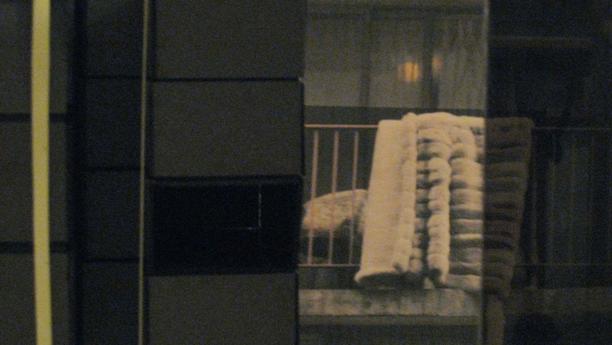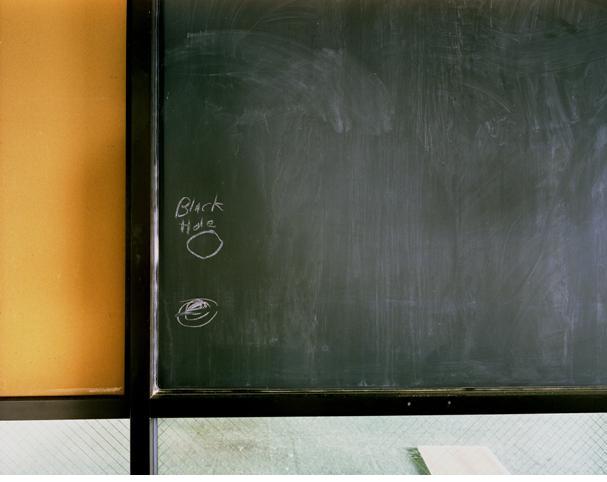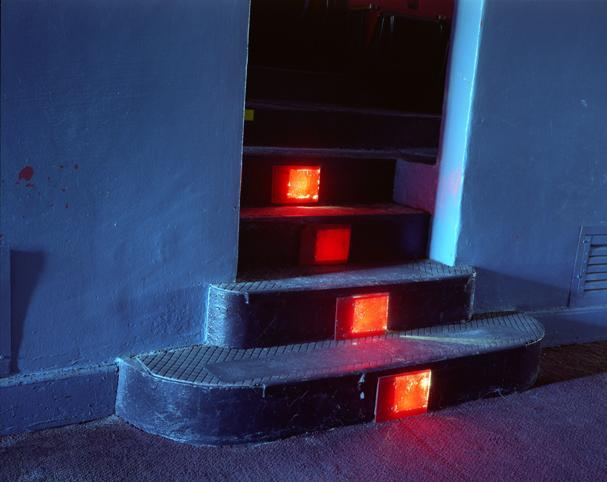Future without Utopia: Curator Olga Kopenkina Discusses the Properly Past Exhibition
A conversation between critic Linda J. Park and curator Olga Kopenkina about the Properly Past exhibition at the BRIC Rotunda Gallery in New York City (March 18 – May 3rd, 2008).
The recent exhibition Properly Past, curated by Olga Kopenkina, brought together the work of five Brooklyn-based artists to the BRIC Rotunda Gallery in New York City. Kopenkina frames these artists’ works around ideas concerning the failure of modernity and highlights the “obsolete phenomena and forms that contain signs of a modernist utopian promise for a future” (from the curatorial statement). Altogether, the works in the exhibition offer observations and new contexts that set up a different paradigm that is reflective of our current post-modern world. The curator and I explore the most dominant question of the exhibit, which is what kind of future can be envisioned from looking back at history and what kind of agency these works have in creating these new considerations.
Works in the exhibition:
Yevgeniy Fiks’ project Communist Guide to New York City (2005-07) presents photographs and maps that archive buildings associated with the activities of the U.S. Communist Party in New York City. A video piece entitled Watervliet, by Pablo Helguera, investigates the genesis of the Shaker community and its culture in upstate NY through a familiar documentary format. Lisa Kereszi’s photographic series Governors Island (2002) depicts the former U.S. military facility near Manhattan that was the site of significant political events in the past century. Rey Akdogan’s installation Building with View, No. 2 (2008) turns a three-dimensional model into a simulacrum of fragments and aborted modernist architecture. Jesal Kapadia’s video A Vacant Rectangle, Left Blank for a Work Expressing Modern Feeling (2007-08) , references Le Corbusier’s last major building project in Chandighar and presents it as it is used today, over fifty years later – a vestige of a canon fallen into irony.
Linda Park: Considering the discussion of modernity as a failed utopian ideal, and it being an ambition that may in itself have morphed into the past – how would you answer your own question: “Can the passage from the modern to the historic be represented without falling into nostalgia?” The works in your exhibition, in my opinion, do not seem to lend themselves to sentimental ruminations of the past nor any particular yearning for modernist ideals. Or do they?
Olga Kopenkina: I don’t think we can avoid nostalgia while speaking about the past. Nostalgia is not a bad thing. The point is that nostalgia triggers a certain impulse to revisit or reconsider the history, and one can move further towards a critical analysis of history, particularly modern history, which is understood by postmodern critics like Mark Lewis as “contemporary ruins.” Lewis’ essay on modernity begins with the description of the modernist building in his hometown and the gradual dilapidation that he observed over the years.(See Mark Lewis. “Is Modernity Our Antiquity?” Documenta Magazines Online Journal. Afterall Publishers. Jan. 10 (2007).) The description is utterly nostalgic, and this is what attracted me to his essay. I like how he moved from his own melancholy to reflections about what really causes this feeling when we look back at the ruins of our not-so-distant past. He made me think that, on the one hand, contemporary melancholy (at least how it is felt in the West) is strongly connected with the belated attempt to grasp what hasn’t been appreciated and understood enough (including the models of “ideal” communities, including the socialist community, which is what I’m interested in). On the other hand, with the realization that certain utopian models and forms that are present in our built environment did not realize their function, or, as Lewis put it, they failed “to provide us with a future in which we might recognize ourselves.” This complex relationship between the past and future – when one must look back on the past from the present in order to envision the future – has been a very common approach to understanding of history these days.
In relation to the exhibition Properly Past, this complexity becomes obvious in works such as Jesal Kapadia’s A vacant rectangle, left blank for a work expressing modern feeling, which is dedicated to Chandigarh, Le Corbusier’s last major project, and in Rey Akdogan’s Building with View, No. 2, a model consisting of abstract geometric forms taken from architects’ studios.
To both artists, modernist architecture is an archive of forms and signs without a precise meaning, a “vacant rectangle” that can mean a lot and nothing, depending how much we want to recognize the progressive development of our civilization (or different civilizations given that the works in this show talk about various experiences) inscribed in these forms. Another example is the representation of New York’s political history in Yevgeniy Fiks’ work “Communist Guide to New York City,” which appeals to Western nostalgia (despite of the fact that artist is originally from Russia) and the sense of revolution and radical left movement.
Another artist, Lisa Kerezsi, casts a melancholic eye on abandoned Coastal Guard facilities in Governors Island near Manhattan, but also looks at them with a sense of curiosity in the attempt to create a normal civil community on the secured island with a military mission. Her photographs from the series “Governors Island” echoes Pablo Helguera’s video “Watervliet,” whose narrative on the Shaker’s settlement near Albany points out another type of utopian community based on the certain religious and societal principles, which ultimately brought them to the extinction. Conversely, the Shaker’s ideal of hard work and their puritan philosophy appealed very much to the American modernist culture and made them one of the most precious cultural and historical memories.
L.P.: I like that you assert that “nostalgia triggers a certain impulse to revisit, or reconsider history, and one can move further towards a critical analysis of history” – I agree with this statement, but do you think that “nostalgia” has taken on a certain negative bent because it can also be reactionary and reinforcing of what may be considered the status quo? Nostalgia to some may be understood to be a kind of longing for an imagined ideal drawn from the past. And, now that modernity is arguably “over,” in the past, or irrelevant, perhaps we are just perpetuating the same cycle – so what’s different?
O.K.: I believe that nostalgia can be understood as a certain emotion that lies outside the frames of bad/good, or negative/positive. Like guilt and shame, it should not mean more than what it means. Otherwise, it becomes politics. Everyone experiences nostalgia for the things past. But what is important to see is how we understand and work with it. Yes, it can be reactionary, like nostalgia for empires, which can sometimes trigger the backward political reforms and developments (examples are the last Italian elections, expressions of admiration for the British Empire by the current Prime-Minister Gordon Brown, or return to the superpower state in Russia), but it can also have a progressive shift. And I think progress happens when we separate our idealistic perception of past from our knowledge of what’s really happened, and we act in accordance with our understanding of this distance. When Russian intelligentsia, who were expelled from or who left Russia of their own will after the Revolution in 1917, felt nostalgic for Russia, they sent money made from selling their books, or playing music to Stalin’s government, while being totally aware of Gulag, etc.
However, what I’m trying to emphasize is the shift from individual nostalgia(s) towards the analysis of our collective consciousness and our perception of time (in its slippage of past, present and future), something like in Proust’s novel: it starts from the Madeleine cookie and goes to the compelling reflections on issues of attraction, sexuality, one’s inner life, and consciousness’ tricks with time and space, etc, that no one before Proust had disclosed. What all nostalgic experiences have in common is that they assume a certain distance that helps one see things that haven’t been seen before in its connection to the future. It’s similar to what Proust says about looking at attractive young women: we are actually unaware of the changes that would occur later in them, and what causes them, until we see their mothers, or aunts, next to them. When a young woman and her mother appear in the same space and time, we suddenly see what would happen to the daughter, and we understand the distance and reasons causing those changes. This is a perfect example of how we look at our current ideals, when they are still young and attractive. Talking about modernity, it is probably “over,” yes (keeping also in mind that we deal with different types of “modernities” and “modernisms”), but it’s still with us as it (or its ruins) is present in our environment and connected to our present utopias and ideals (if we have any), and we are always able to refer to them when we evoke the future. The nostalgia we experience is tied to our understanding of flaws inherited from our past ideals, and to the realization of how it is going to affect us in the future. This is the reason why we have to make this detour or U-turn—this returning to the past – that brings us closer to our future.
L.P.: What is interesting about Lewis’ article is that he seems to be searching for new subjectivities in relationship to modernist forms/projects that may have a potential for a “new sense of history.” So, as he explores this in his writing and you as a curator dig up this archaeology through contemporary art works, let’s discuss how the artists in your exhibition might offer new possibilities for understanding the future. They all have in common, as you point out, the fact that they “examine obsolete phenomena, ideas and forms,” but what do they also present in terms of a new/different relationship to this past?
O.K.: Talking about subjectivities, perhaps my reading of the artists’ works in this show is inspired by my own post-Soviet background (I grew up in Belarus, a former Soviet Republic) and the sense of history connected with the collapse of the world I used to live in. A common belief, formulated by critics like Boris Groys and others, is that the collapse of the socialist bloc affected the entire world, not only the socialist countries, for the certain ideals, like labor-based societies, or workers’ revolutions, that are so cherished in the West, were seriously damaged with the end of socialism in Eastern Europe. Moreover, the process of integrating the former socialist countries into the world’s Empire is happening at the same time as the postcolonial involvement of Asia, the Middle East, and Africa in global economy. It’s important to see these processes as parallel, if not interwoven. Globalization was certainly connected to the expectations that we would live in one unified world – a sort of ideal community, from which no one would be excluded. But now we see that globalization in its current form doesn’t bring liberty and equality for everyone. And understanding that it is impossible to construct the ideal world on principles of corporate globalization, which eliminates the national identities and differences, was precipitated by the failure of the past socio-political and aesthetic models. From my point of view, Yevgeniy Fiks’ work “Communist Guide of New York City” has an interesting juxtaposition with Kapadia’s work “A vacant rectangle left blank for a work expressing modern feeling” as the latter brilliantly points out to what has happened to our ideals. Kapadia uses the eighteenth-century renowned Urdu poet’s verse that subtitles the video footage she made about the city of Chandigarh in India, focusing on Le Corbusier’s urban planning and architecture realized in the 1950s. The piece connects different periods of time in the history of India: one is during the British colonization, to which the poetry refers, when British wanted to turn Indian cities into the cosmopolitan modern industrial centers of the colonial world, and another one is after the partition of British India between India and Pakistan in 1947, when Jawaharlal Nehru, an India’s socialist Prime-Minister, undertook the construction of Chandigarh, a city that now serves as the capital of two states, Punjab and Haryana, and is a union territory of India. Nehru wanted Chandigarh to feature the new progressive look, famously proclaiming it “unfettered by the traditions of the past, a symbol of the nation’s faith in the future,” which is a big contradiction to a dilapidated, failing, aesthetically and practically, Le Corbusier’s modern utopia, as it’s seen in this footage. When we observe the rapid growth of India’s economy these days and the country’s partaking in globalization – with the treatment of India as a resource of the cheap labor force – we can actually see that it repeats the processes of the eighteenth century, but in the new form of distant colonization. From this prospective, Le Corbusier’s project for Chandigarh in its monolith, functionalist architecture turned out to be as great a failed utopia. It is important to understand that the more we move towards our luminous ideal future, the more distant we get from it, that’s why looking back to the past lessons in attempting to build ideal worlds – be it religious community, socialist workers state, or modernist aesthetic utopias – gets a new value.
L.P.: What you described about Kapadia’s piece, “a lot and nothing,” seems to touch upon all the works in Properly Past. But, what I’d like to press further is, what picture of the future or possibilities of a new world are we given by these artists?
O.K.: I think the task here is not so much to picture the future, but to show what didn’t work, or what failed to realize its promises for the future, for example, to show that the past ideals are not the mirrors, in which one can look and recognize the future, or are they are imperfect mirrors, which show rather the loss and failures. Visually, it came out in the images of abandoned spaces and rooms in “Governors Island” and “Watervliet,” or in the blank facades of the buildings in “Communist Guide of NYC,” or in the shabbiness of the incumbent forms of Chandigarh architecture, similar to the Soviet architecture built in the 20s and 30s, and later, in the 70s. To see the images of future in terms of utopia, I would probably refer to some sci-fi Eastern European movies – the well-known Stalker and Solaris by Tarkovsky (or read the books these films are based on: the Russian novel Roadside Picnic by Boris and Arkady Strugatskys and Solaris by Polish writer Stanislaw Lem), or The Silver Globe by Andrjei Zulawksi; all of them draw upon philosophical concepts rather than special effects. It would be interesting to juxtapose the imagery in these films with those in the Properly Past, to see how past and future relate to each other.
L.P.: I’m somewhat skeptical that the past is really a complete source for “our luminous ideal future” and that there are some things that exist in the present that we need to look at as a continually changing factor. But this flux is, of course, a much trickier entity to grasp.
O.K.: Again, we are doing the “u-tour,” remember, what is the focus of this movement is the transition from present to past, back and forth. As Proust stated, we don’t live our years in their continuity, day after day, but in our remembrance, which does not obey the order of time because something that is remembered ages differently, or remains young. The process of recognition and identification follows the flux of memory, with the point of departure in the present, of course. But when we think of our present, the past comes out like a void check, and sometimes it’s hard to tell if something has already become void, or if it’s still qualified for being a predicament of the future. Perhaps our modernist ruins – especially that of the monumental architecture of the former socialist bloc – are coming from our future, not the past. It’s like the mysterious black monolith in 2001: A Space Odyssey that always comes from nowhere, and we don’t know if it’s a part of the past civilization, or if it’s an ‘alien’ from the future. By the way, there is a theory that the black monolith from Kubrick’s movie was based on the proportions and size of the main building of the United Nations. This comparison is so illuminating: the UN is still functioning, but its effect on contemporary politics and peace process is minimal, so it can be qualified as a contemporary ruin. Perhaps the perfect architecture of that highly proportionate building bears some signs of its future failure that has not been completely fathomed. It is a complex process. This is why I took as an epigraph to my show the line from Strugatsky’s Picnic on the Sideway, which mentions a black hole from which the future shines. The past is always a black hole. The more we become closer to the future, the more things we discover in our past. And we don’t know what kind of the new discovery we should expect to make.
L.P.: I have to go back to this notion of obtaining some kind of knowledge about the future, based on reflections of the historic. My experience of the works in Properly Past is that each contains an individual look at the historic, for the most part pointing out the failures of the past. I question the role of these works in actually evoking something for a sense of the future. In their dialogue, they read much more passive and solely highlighting what is arguably obsolete rather than articulating something more. Could you say something about these works in commenting to your curatorial conceit about knowledge to carry into the future? And, are you hopeful about the present world and the future? And, how do you feel artistic practice can carry these concerns towards a real dialogue?
O.K.: I think our potential to obtain knowledge about the future from images of the past very much depends on our beliefs and identifications with the former. The question is: do we really believe in future? Are we still in the age of utopia? Probably not. Our time has been described as postmodern and post-utopian with a weakened sense of history, or a “permanent present”(See Jean François Lyotard, The Postmodern Condition, (Minneapolis: U of Minnesota P, 1984); as well as Frederic Jameson, Postmodernism: Or, the Cultural Logic of Late Capitalism. (Durham, N.C.: Duke UP, 1991).) – pretty much like a nightmare. The collapse of the socialist bloc (the degradation of which started much earlier than 1991), the decline of Marxism and workers’ movements around the globe marked the end of the utopian age. It goes along with the increasingly common disbelief in technological progress, and especially after 9/11, in the possibility to build a perfect society in the condition of market economy. Utopia somehow swirled around the extreme capacity of collective praxis to construct reality. And we live inside of this reality we have collectively produced, the image of which is pretty much that of Apocalypse. One can wonder why, for example, it’s not Aelita, the Queen of Mars – a Russian film, made by Iakov Protozanov in 1924, with its projection of the vanguard belief that revolutionary struggle can be exported everywhere, even to interstellar places – popular these days, but it is Tarkovsky’s Stalker, with the views of corroded, dilapidated post-industrial landscape, or Zone (with its probable references to the USSR’s polluted industrialized territories), which still fascinates us and has become the foundation of an entire aesthetic. I have just recently read an interesting analysis that the origins of Le Corbusier’s and other modernists’ architecture lie exactly in such a Zone, with its scattered incumbent social housing, crumbling high-rises and streets going to the sky… In the 1920s, every modernist manifesto was full of the photographs of cyclopean remains of silos, gasometers, factories and power stations. That’s why many contemporary futuristic projects and concepts – be it high-tech design and architecture (like Zaha Hadid’s, for example), or artists’ tales (take for example, Matthew Barney’s Cremaster) – reflect somehow this feeling. In other words, it is what Antonio Negri described as speaking “of vanguard without being utopian.” We no longer have images of “luminous future,” instead we have the reality of the world, which, as Negri put it, has become complete and all attention is directed inward.
I guess what we really want to know and understand so desperately is the present. The valuable moment in all works of the Properly Past is, nevertheless, the constructed imagination of the aliens, who are, in their alienation, capable of seeing the world in its fascinating, poignant and morbid antiquity, with both revolutionary and reactionary elements understood in their relation to the present. For example, the use of Le Corbuiser’s Chandigarh architecture by Indians may gain new value in the further development of Indian cities, if they take advantages of country’s new economy in creation a new type of community and locality. But it has to go through the stage of dilapidation and devaluation of any kind of cosmopolitan utopia, which brought this overambitious project to life – be it inspired by the eighteenth-century colonialism or twentieth-century modernism. A similar potential can be found in the images of Yevgeniy Fiks’ “Communist Guide of New York City,” with their hidden (almost forgotten) historical references to the time marked by the proliferation of workers’ organizations, the expanded public sector, and the creation of forms of collectivity and solidarity between immigrant-workers – the processes fostered by Communist and Socialist parties in New York City.(Fiks’ project is for some reasons reduced solely to the activities of CPUSA, though there were three communist parties in NY.) The knowledge these images contain can go a long way in changing the current NY urban politics towards the progressive confrontation with late-capitalist privatization of public space – something that has affected the city’s identity over the years. Likewise, seeing the remnants of the civil life of the former military camp in Governors Island near Manhattan, with its memories of the progressive political events the island hosted (such as the proclamation of Haiti’s independence and the dissolution of the USSR), might influence the current discussions about how to use the island now (actually it’s been given to the people of New York after the long debates whether or not the island should be privatized). But again, our reading of these projects depends on how we identify ourselves with what we see in images of the past. This question is left open by the artists. But it’s important to understand that seeing the world as a wasteland of our ideals and hopes is neither passive nor negative. We should follow Guy Debord’s rule here: “One has to envision the worst and fight for the best.”
This conversation occurred intermittently throughout April and May of 2008 in New York.












